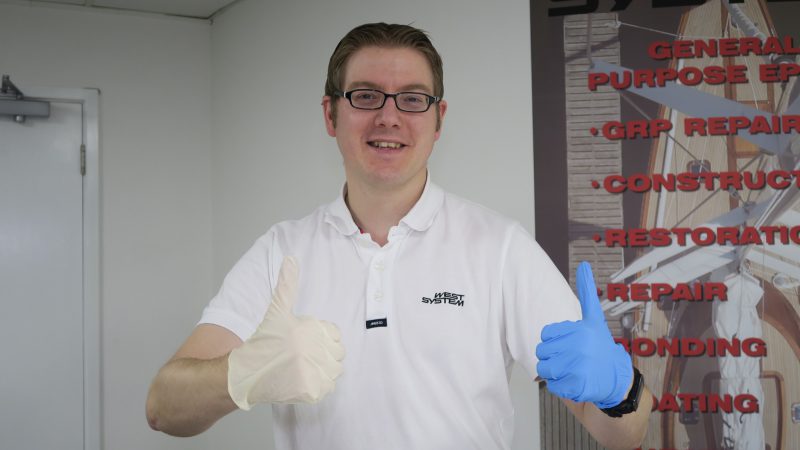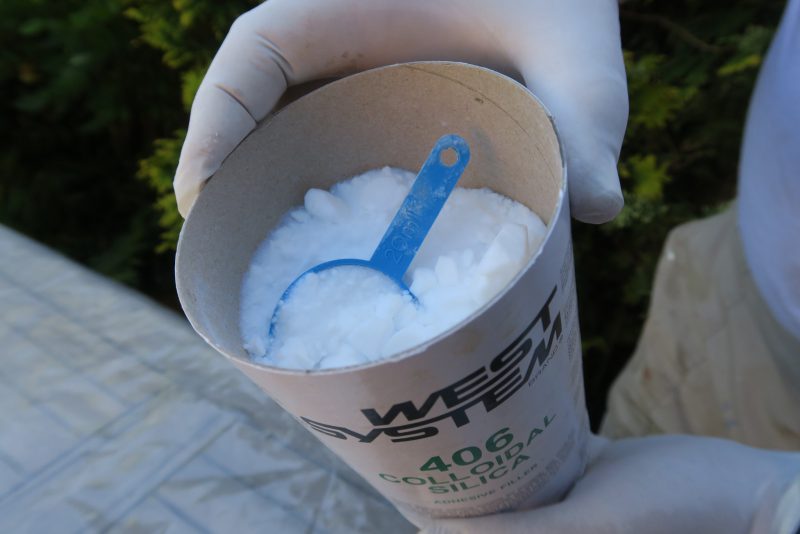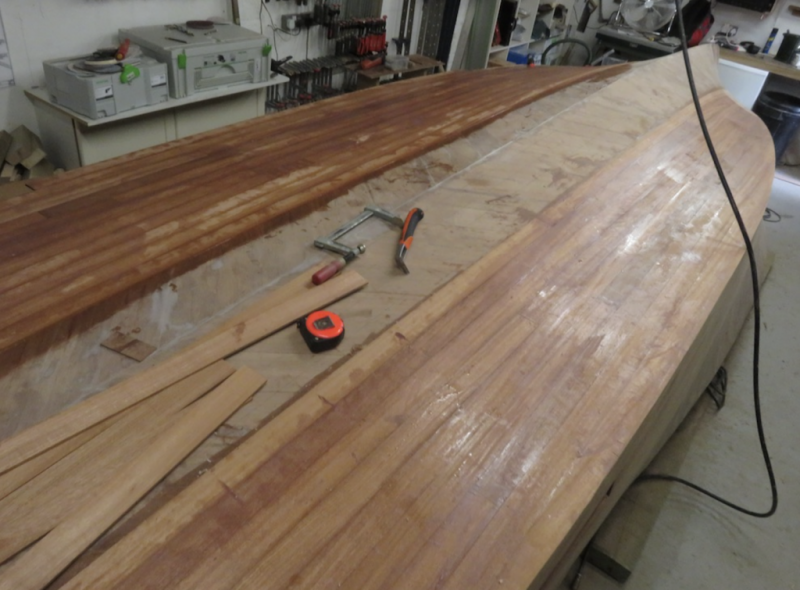News: Additive of the month
WEST SYSTEM product Technical Advisor Hamish Cook guides us through the range of additives available to enhance your epoxy project. Describing how to choose and use each one, Hamish provides the technical groups’ special hints and tips for a first-class result.

Technical Advisor Hamish Cook
“Fillers are used to thicken the basic resin/hardener mixture for specific applications,” Hamish says. “Each filler possesses a unique set of physical characteristics, but they can be generally categorised as either Adhesive (high-density) or Fairing (low-density).
“Adhesive filler mixtures cure to a strong, hard-to-sand plastic useful in structural applications like bonding, filleting and hardware bonding.
“Fairing filler mixtures cure to light materials that are easy to sand. As such, they are generally used for cosmetic or surface applications like shaping, filling or fairing. A top tip, though, is to seal all faired surfaces with epoxy before painting.”
This month it’s:
COLLOIDAL SILICA (Adhesive Filler Additive 406)

What is it? Silica is the common name for silicon dioxide and WEST SYSTEM 406 Colloidal Silica filler is a white powder made of very small particles (each around 100 nanometres across) of finely-ground silica. Comprised of 47% silicon and 53% oxygen, silica is one of the most common compounds on earth, producing items such as quartz crystals, flints and some types of sand.
Used for? The ‘Colloidal’ bit always refers to a suspension of particles within a liquid in which they do not dissolve. For example, milk is a colloidal suspension of fat particles in water. Colloidal silica is designed mainly as thickeners that won’t break down after mixing into the host material. As such, they are widely used in construction concrete.
For epoxy and fibreglass work, colloidal silica is perhaps the cheapest and most general-purpose additive available as it has so many uses. The tiny particles are suspended within the mixed epoxy to thicken it for use as a filler, an adhesive or a filleting compound. It is electrically inert, so can be used as an insulator.

Each 406 Filler container includes a plastic scoop (you may have to dig for it if the contents have settled) that is calibrated to one full pump of resin and hardener to give the right consistency for a glue mix.
Hamish’s tips:
Mask up

“Colloidal Silica in its dry form is very light and flyaway. It is always advisable when working with dusty products to ensure no particles are inhaled, so a mask is recommended”.
Chop, don’t stir.

“When you first mix 406 filler into your mixed epoxy, start with a chopping motion with your mixing stick rather than stirring. This is less likely to whip the filler into the air”.
Perfect flow

“As a general thickener, 406 filler gives you accurate control over the consistency so you can tailor the mix to a specific task. For example, if you wish to fill screw holes, a mix delivered from a syringe gives more precision. The consistency can be tailored to flow through the syringe quite easily but still be thick enough not sag out of the screw holes”.
Great for glue

“WEST SYSTEM 406 Colloidal Silica is an excellent choice of filler for use in creating an adhesive mix for the bonding of timber laminations and/or veneers”.
Stop the resin creep
“As a general purpose thickening additive, it can be used to prevent epoxy ‘migrating’ on vertical and overhead surfaces and to control the viscosity of the epoxy”.
Make a thin ‘gelcoat’

“When doing small composite moulding operations, adding 406 Filler at a weight ratio of 1% to the mixed WEST SYSTEM resin and hardener can create a gelcoat mix. This will provide a good base for paint and help prevent ‘print-through’ of the fabric.”
Mix the day before
“When making this epoxy/406 “gelcoat”, a great tip is to measure out all three components (i.e. resin, hardener and 406 filler) the day before and then mix the filler into the resin only – (without the hardener). This will provide time for the resin to thoroughly wet out all the 406 Colloidal Silica particles before the hardener is added when ready to do the job – but make sure you accurately measure out the three components!”



